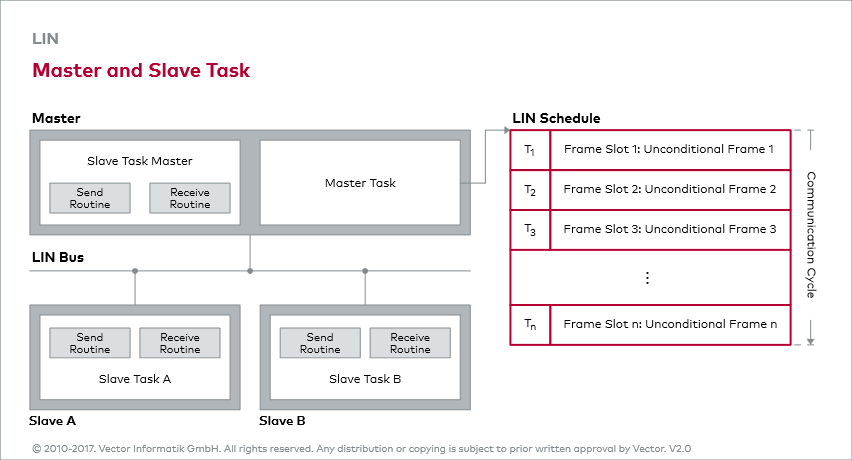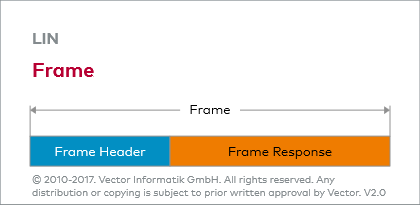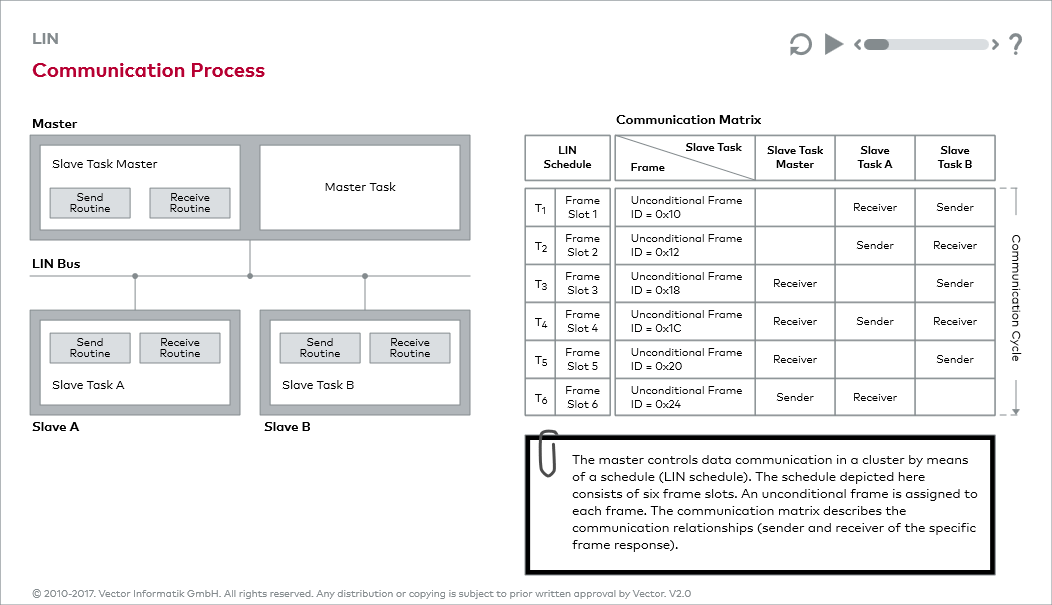Processes
Master Task /
Slave Task
Since there is no communication controller, the protocol is implemented in the form of software components on the microcontroller. It is through these that the specific node receives a master task or slave task which is needed to carry out the desired communication. In principle, each node has a slave task that serves to receive and send out information. The master has the additional master task which delegates the sending right and controls bus access (see figure: Master and Slave Task).
Master Characteristics
As soon as a network begins to operate, the master task is started in the master. It then begins to periodically process the Schedule that represents the desired sending scheme. In the Schedule, slots are defined for the individual messages. These slots must be at least large enough so that the Frame Header and Frame Response can be sent out (see figure: Frame). A complete frame is always transmittable in a slot.
Slave Characteristics
Response behaviors are defined for the slave tasks. Exactly how a slave task should react to a received header is defined, for example. Possible response behaviors are: sending, receiving or ignoring of a response. A sent response is in principle available for any slave task to receive (see figure: Communication Process). The desired response behaviors of the individual nodes are described in the LDF.




